Best Stone Floor options for Indian Homes
Best Stone Floor options for Indian Homes Read More »
Born of nature, each piece of stone has a definite character and grain. This hard and cool material is ideal for homes in warmer climates. A natural stone’s organic surface resists dust and allergenic organisms, making it safe and durable. From rough to smooth, porous to dense, choices in stone flooring abound. Take a look at some best stone floor options among Indian homeowners and designers these days.
1.Marble
Timeless and highly durable, marble is an excellent choice if you desire an ambience of both luxury and antiquity. Marble is resilient and it comes in a wide range of patterns and colours. While pure white marble gives a pristine appeal, the darker shades are distinctly beautiful, too. Being a premium material in terms of looks and pricing, it is best to show it off in the living room.

2.Granite
Granite is a hard-edged stone with a beautiful natural grain. Its resilience makes it great for both indoor and outdoor use.
Employing locally available stone cuts transportation costs and makes it easy on the purse.
Black, green, pearl and galaxy are widely available granite colours. The more this stone is polished, the more refined it looks.

3.Slate
Slate is a handsome porous stone. It is easy to cut and to make into sheets. Mostly available in gold, grey and black, slate works well in both dry and wet areas of the house. This stain-resistant surface can be great for your living room, hallway, bathroom, dining and kitchen areas.
If you always wanted to make a statement in the bedroom then use slate stone in mosaic. The variations in earth-tone colours take rusticity to a new level!
To know more about Slate and their uses click here

4.Sandstone
This is a widely prevalent stone in India with large variations in colour and grain. Highly durable and warm, it lends the room a distinctive natural look with its rocky characteristics.
Sandstone is great for outdoor use, too.

5.Limestone
This sedimentary stone can be found in a variety of colours, from creams to charcoal. These stones make good company for all kinds of decor styles – from traditional to contemporary.
Limestone is naturally porous and soft. It may be sanded for a polished look or machine-tumbled for a rough look. It is easy to clean and maintain.

A fine-grained variety of limestone is Kota stone. The green, blue and brown varieties are mostly quarried from Rajasthan. It is non-porous and non-slip, making it a great choice for high-traffic areas and outdoor spaces.

Join us in the comment section to let us know about the other best stone floor options.
For more Interior and Architectural Guides :
Best Stone Floor options for Indian Homes Read More »
Floor tiles come in a plethora of options. They have great qualities: they are durable, easy to install, cost effective, low maintenance and easy to clean. All this makes them a popular choice for use in the home over conventional marble, natural stone slabs and hardwood floors. With so many varieties of tiles on offer, such as stone, porcelain, vitrified tiles for flooring, the question is, which ones are best suited for your home? Let us look in to the types of tiles perfect for Indian Floors.
Glazed ceramic might become slippery – you’ll get better safety if you go for matte-finish tiles and cement or epoxy grouts.
Ceramic tiles are cheap, cost-effective and readily available, so we suggest them as a possible flooring material for Indian homes – otherwise, porcelain tiles are a better option. The main drawback of installing ceramic flooring is that it is fragile and prone to chipping and cracking.

2. Porcelain tiles
Porcelain tiles are a kind of ceramic tiles that are made with finer clays and extra mineral components, baked at higher temperatures. This process makes them dense, less porous and stronger than ceramic tiles. Porcelain tiles for floors are ideal in high traffic areas as they are resistant to chipping, scratching and stains. With the introduction of digital tiles,numerous design options can be achieved on any floor tile.
It is advisable to go for rectified or joint-free tiles, where the edges of the tile are cut after they are kiln-baked, to get precision in size. For a neat and seamless look, use epoxy grouting and maintain a gap of at least 2 millimetres between each tile.
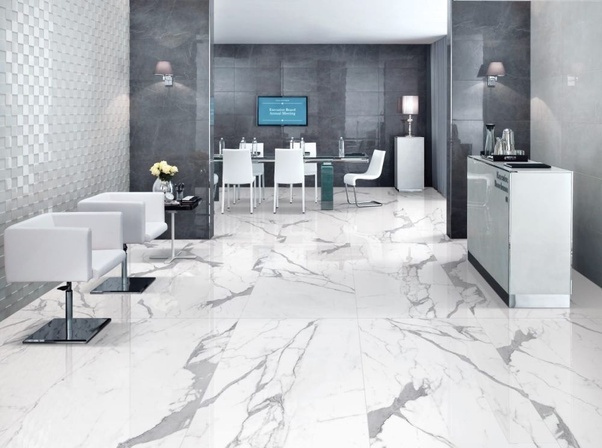
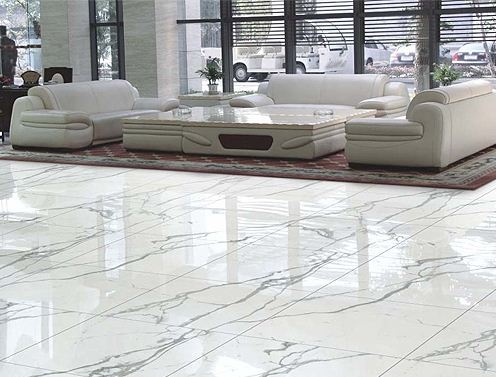
4.Terrazzo tiles
A terrazzo tile is a composite of natural marble, granite or quartz chippings that are held together by a resin or concrete base with a colour pigment added to it. It has a unique speckled look and is designed to last a lifetime.
Their manufacturing includes the process of exposing the marble or stone chips on the surface of the concrete and then polishing them till they are smooth. One advantage of terrazzo tile flooring is that if the surface gets worn out over the years, it can be refinished and polished to look like new.
Opt for pre-polished tiles, which require low maintenance and are scratch-resistant.
To know more about Terrazzo in detail click here
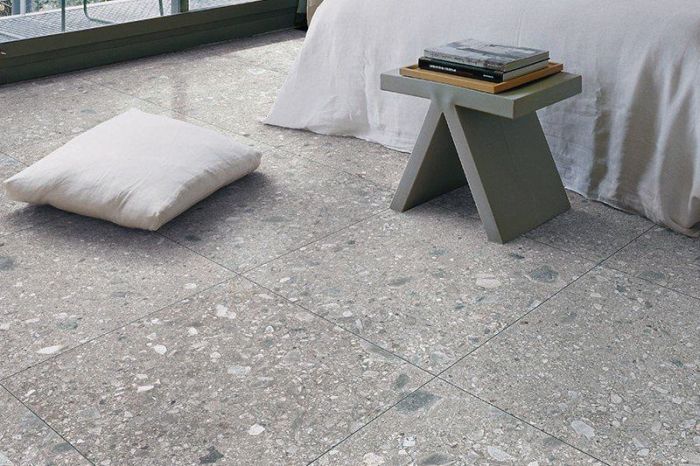
5.Stone tiles
These tiles are made with natural stone materials like sandstone, slate, travertine, marble and granite. Natural stone tiles add colour, texture and warmth with their unique patterns that impart elegance and richness to the space. The natural stone slabs are machine-cut to standard square or rectangular tiles. Note that stone tiles for floors need to be sealed periodically as they are very porous.
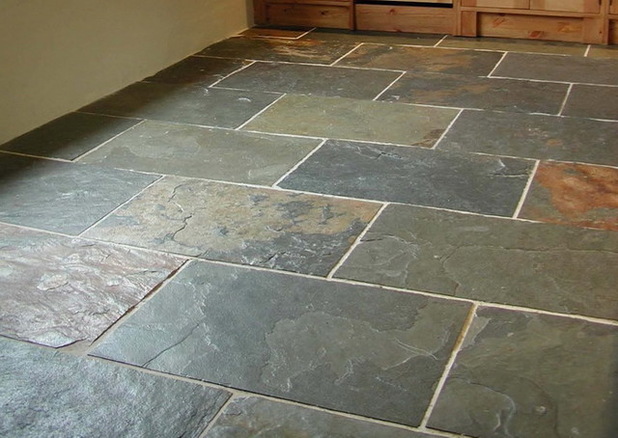
6. Cement tiles
Break away from convention and consider cement tiles for floors, also known as encaustic cement tiles. See how the bold traditional patterns of the floor in this space add life and breathe heritage into a contemporary space.

Join us in the comment to let us know about your opinions and views.Do let us know if you know any other tiles perfect for Indian floors.
Types of Tiles perfect for Indian Floors Read More »
Wood veneers and laminates are among the most commonly used decorative materials for surfacing cabinetry, furniture, walls, ceilings and much else. Wood veneers are thin layers of wood precisely cut from a thicker log while laminates are multi-layered sheets of paper and plastic resins glued together into one. Both veneers and laminates are pasted on a sub-base of solid wood or wood composite plywood board or MDF (medium-density fibre board) that is usually the original surface (of cabinetry, tables, etc.).This article discusses a wood veneer vs laminate debate with their pros and cons to help you choose the best.
Wood veneer
Pro: Looks great
As veneer is derived from actual timber, each sheet is different from the other. Embedded natural patterns offer a more organic and high-end look, one that only a solid wood surface possesses.
Wood veneers can accentuate any space; see how the caramel-toned veneer adds elegance and high style to the whole space!
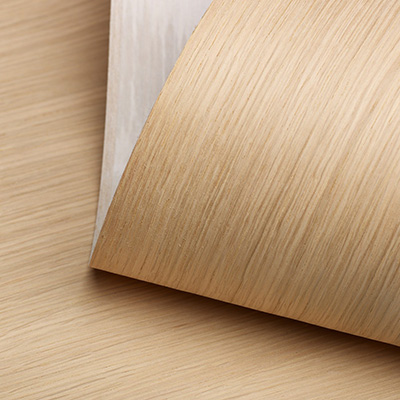
Pro: Can be stained and textured as required
Just like solid wood, veneer sheets can be coloured and polished to achieve the intended hue and grain that goes with the design theme.
Pro: Lasts long. Though strength and overall appeal of the veneer application is largely dependent on workmanship, quality installations last long … and longer. Veneers are likely to stay intact for a minimum of 15 years if installed and maintained properly.
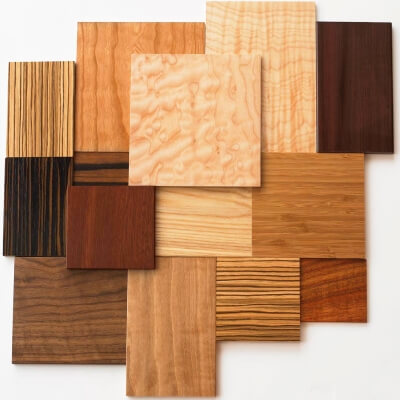
Pro: Is eco-friendly
Veneers are a renewable resource and they go a long way in economically replacing solid wood applications. One log of timber produces a number of veneered wood slices, boosting its cost-effectiveness. Not only that, pricey veneer sheets can be backed by an inexpensive wood board or plywood board to achieve the desired rich look within a budget.
Con: Not resistant to stains and scratches
Veneer sheets are softer than laminate sheets. Once the polish layer wears off over time, the veneer becomes susceptible to abrasions. The veneer sheet may bubble or warp if moisture seeps into the core material or if the top layer is exposed to heat. So they are not great options for kitchens, bathrooms and other wet areas.
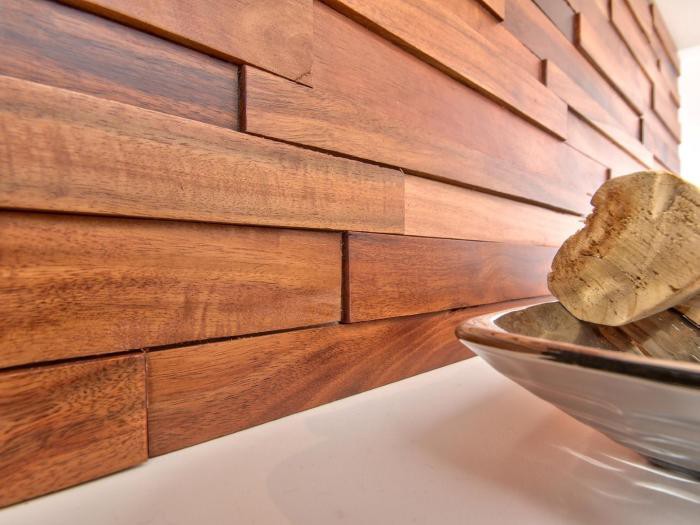
Con: Requires timely polishing
To keep up the lustre, veneers need to be repeatedly polished (a process of spraying or painting the polish material in order to regain any lost colour or texture). Depending upon the thickness of polish applied, the surface can be sanded and repainted to cover warps or tears.
Con: Some can be high-priced. Slicing of veneer and installation of the sheets over any surface requires skilled craftsmanship. This extra effort makes them expensive in comparison to laminates. Furthermore, some premium veneer sheets can cost a bundle.
To know more about wood veneers click here
Laminates
Pro: Is affordable. Laminates are machine-made products and are, therefore, easy to produce. Their cost of production is low and they are widely available.
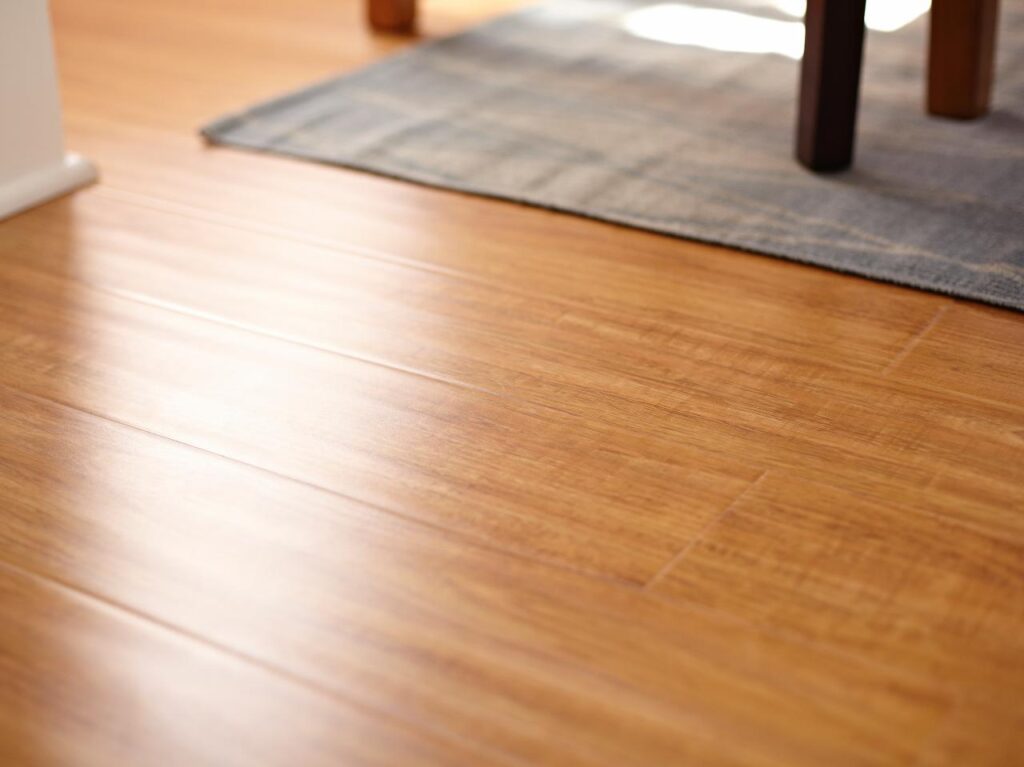
Pro: Available in a variety of colours and designs
Since laminates are pre-printed, one cannot find natural variations in the sheet like one does in wood veneers. However, other endless designs can be manufactured to choose from.
Due to availability of both glossy and rough textures, laminates can replicate almost all surface finishes including wood, stone, marble, leather and more.. Some digital printers produce personalised prints on the sheet too.
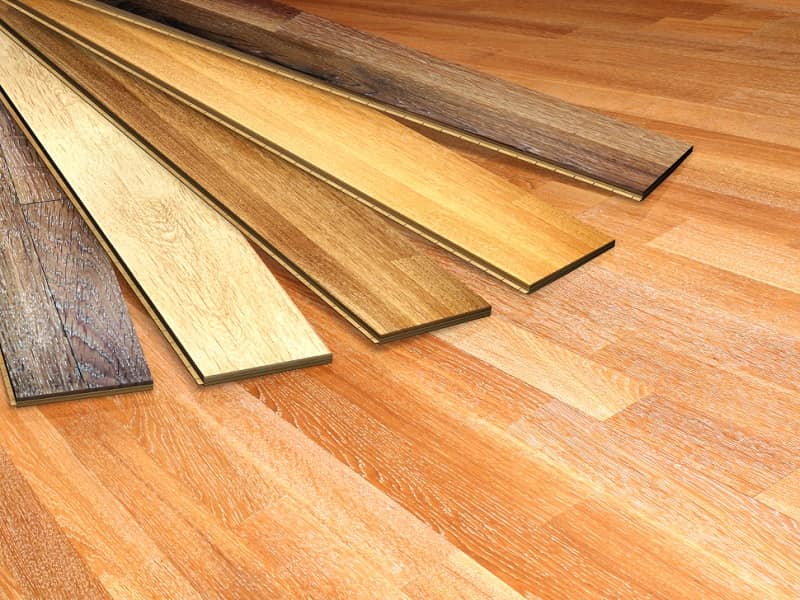
Pro: Is strong and easy to maintain
Laminates are produced by compressing two or more layers under high pressure, resulting in highly durable and impervious sheets. Laminates tend to fight heat, moisture, stains and scratches better than veneers, making them easier to clean and take care of. Therefore, they are great for high traffic and damp areas like kitchens and tabletops. Most laminate manufacturers provide a minimum warranty of 10 years on their products.
Con: Looks cannot be altered
Most laminates are coated with a thin transparent plastic protective sheet above the printed decorative layer. Unlike veneers, they cannot be sanded, stained or textured according to demands of the design.
Con: Is non-renewable and sometimes toxic
A laminate sheet contains plastics and resins. Some resins give off harmful gases.
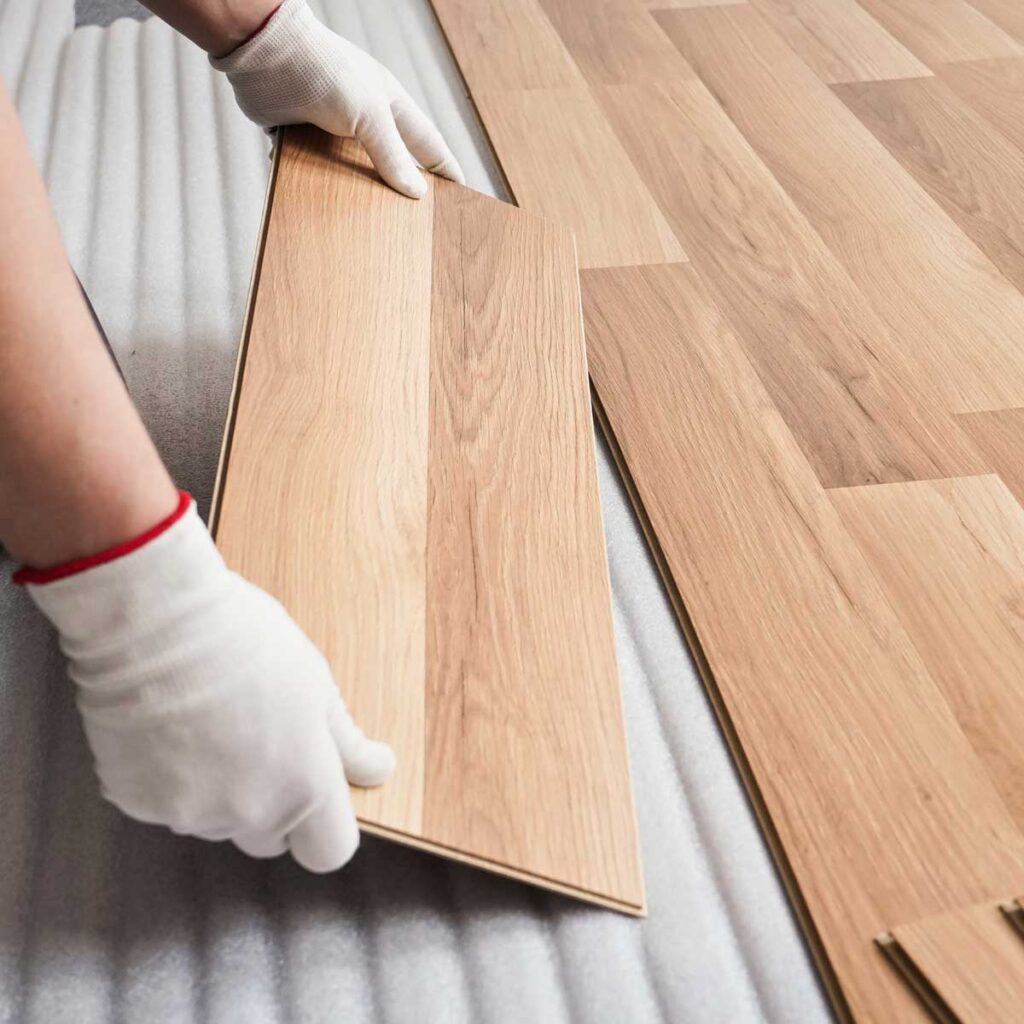
Con: Is prone to clipping at edges
In most veneer installations, the corners and seams are sealed by the polishing material. On the other hand, the edges of laminate applications remain open and sharp. Inferior workmanship often leads to clipping and breaking of hard laminate sheets which can only be solved by replacing the worn sheet by a new one.
To know more about laminates click here
join us in the Wood Veneer vs Laminate in the comment section with your views and opinions.
For more Interior and Architectural guides :
Wood Veneer vs Laminate : Which is the best interior finish ? Read More »
From iconic blue and white to handmade wooden furniture, these are the ingredients for authentic Mediterranean design style.
On the mediterranean coast, the timeless charm of the sea melts into the distinctive shapes of iconically mediterranean architecture. Enveloped in the scents of nature, these houses truly indulge in a style that is completely “southern.” We explore what makes mediterranean homes unique, and what characterises their amazing interiors.
White, the undisputed protagonist
In a warm climate, protection from the sun and heat is crucial for the greater part of the year. It’s no surprise, then, that white is the predominant colour in this region. Furthermore, lime has cooling and antimicrobial properties, making this colour even more widespread in Mediterranean architecture. However, its significance has long circumvented its original practical uses, and it has become a kind of aesthetic code, associated with visual relaxation and a sense of cleanliness for both the eye and the mind.

Unfailing blue
More than any other colour it is blue that acts as the counterpoint to white’s dominance in the architecture of the region. Its diverse shades – pale blue, turquoise and ultramarine are the most frequently used – recall the coast and the sea that bathes it, and are the perfect choice for breaking up the uniformity of a white backdrop. It’s great not only for doors, window frames and finishes, but also for furniture and accessories.

The charm of stone
Stone is one of those materials that are able to define the aesthetics of a space. Especially characteristic of the region is tuff stone, or stone formed from compacted volcanic ash. Highly prized and frequently used throughout the Mediterranean regions, stone is often left exposed in both outdoor and indoor spaces. Furthermore, it is versatile, allowing for the creation of beautiful pieces such as the amazing bathtub we see in this picture.

Ceramics
Majolica (Italian glazed pottery), azulejos (Spanish and Portuguese floor tiles) and zellige (mosaic tilework especially typical of Moroccan architecture): Enamelled and hand-decorated tiles are a huge part of the mediterranean tradition, especially on bathroom and kitchen surfaces, or in built-in stone kitchens. The use of new or recovered tiles not only evokes the charm of Mediterranean style but also allows for thousands of possibilities for decor through different tile combinations.
To know more about Majolica in detail click here
To know more about Azulejos in detail click here

Fresco-embellished ceilings
In villas and palaces mediterranean style evolved into a richer decorative register, including ceiling frescoes and sophisticated floor designs, often featuring floral motifs or depicting mythological scenes. These elements can be melded with contemporary furniture for a more modern take or to create deliberate accents within the mediterranean aesthetic.
An organic touch
Many elements in the Mediterranean architectural vernacular have smooth shapes that have been brought to life by hand. Everything from chairs to kitchen countertops, built-in shelves and even niches are often hand-crafted. Especially when stylishly embellished with personal items, such elements speak to an individual and human touch.
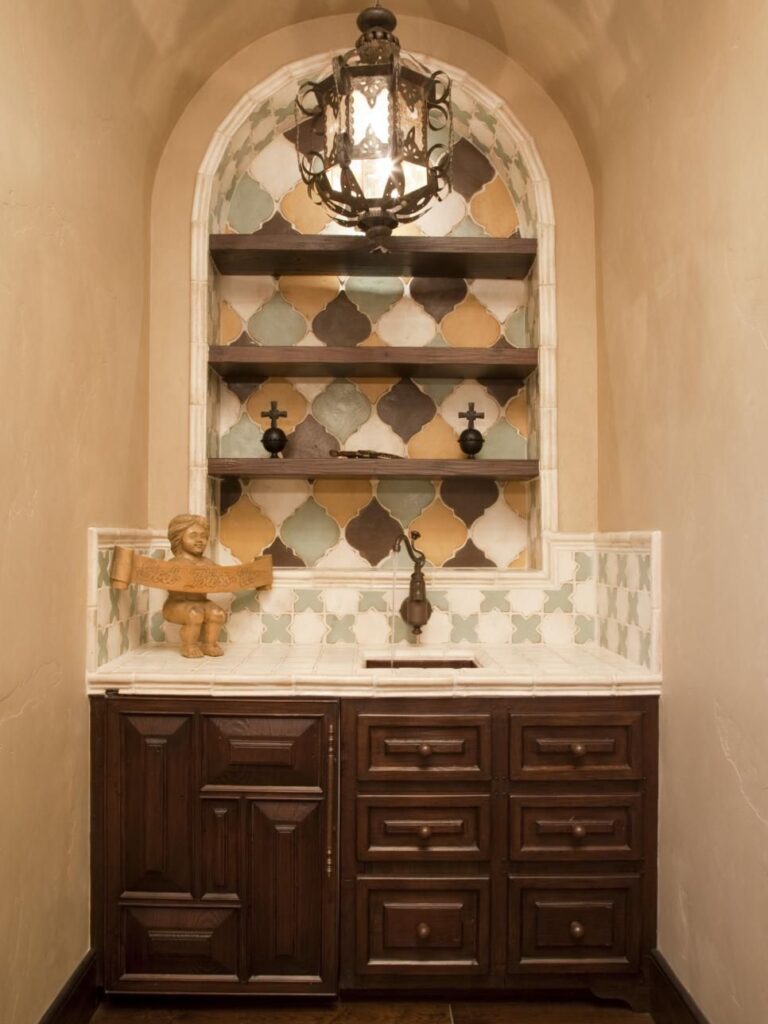
Raw wooden furniture
The furniture that has a privileged role in Mediterranean interiors is therefore also handmade, unsophisticated and marked by the passage of time. This furniture exalts in the beauty of the simple and slow work that lies at the heart of its creation. For a traditional mediterranean aesthetic, look at conifer wood especially.
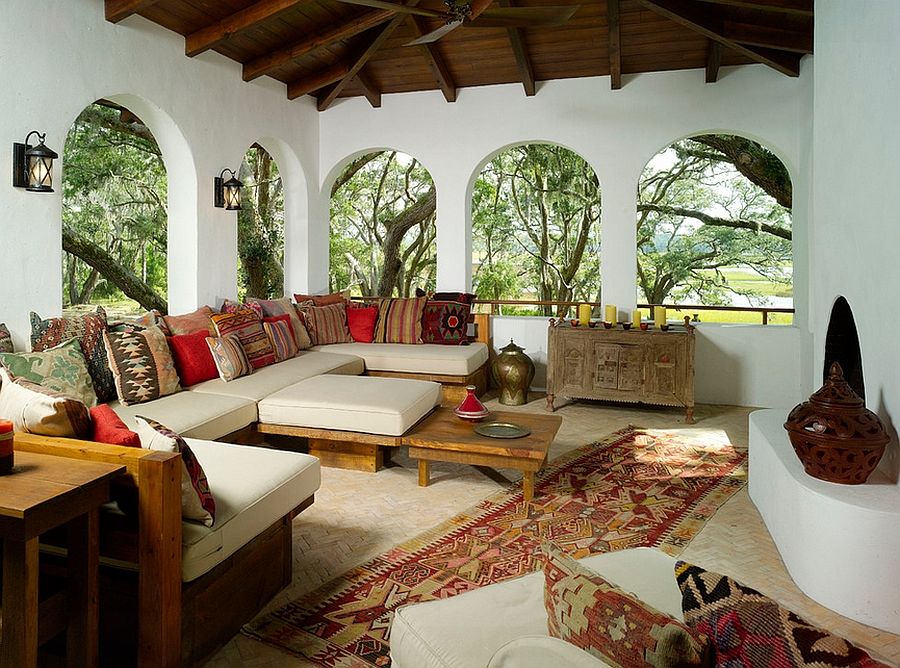
Fabric and natural materials
Alongside old stone, lime and handmade finishes, we often find furnishings and household linen made from natural materials and fabrics. Cotton sheets – linen would have worked as well – are an invitation to fall asleep, while the straw baskets are a perfect decorative accent.
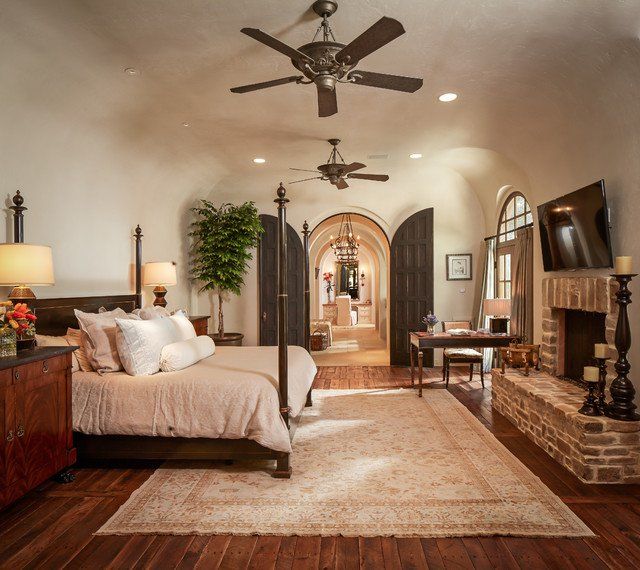
Reed pergolas in outdoor spaces
On hot and sunny days pergolas with reed lattices make terraces and gardens enjoyable even during the warmest hours. Their structure promotes the growth of climbing plants, which add spontaneous organic decoration.
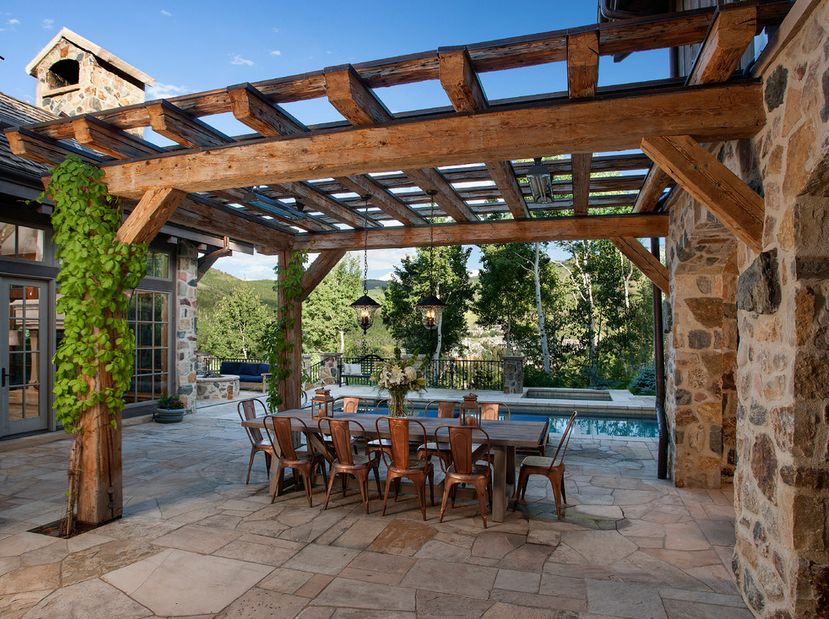
New mediterranean minimalism
It should be emphasised, however, that the Mediterranean area is not just about traditional style built up of various architectural staples; it also showcases the best expressions of contemporary architecture and design. Especially interesting are projects that integrate the Mediterranean spirit with a minimalist touch: Houses large and small that deftly mix concrete with old, original materials, essentially representing the abstract icons of traditional forms while maintaining that smooth and cozy Mediterranean touch.
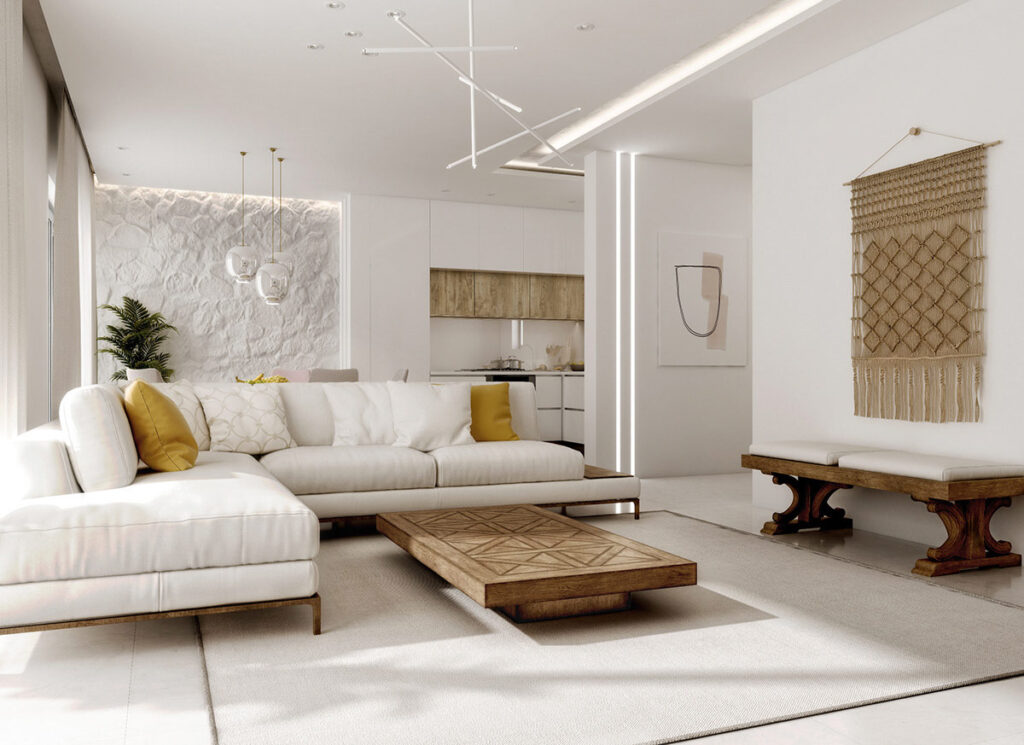
An olive tree in a terra cotta pot
If one had to name a plant that, above any other, has influenced the history of every single Mediterranean civilisation, it would definitely be the olive tree, which grows throughout the Mediterranean basin. We often find olive trees on terraces overlooking the sea, so why not plant them in wonderful (and natural) terra cotta pots?
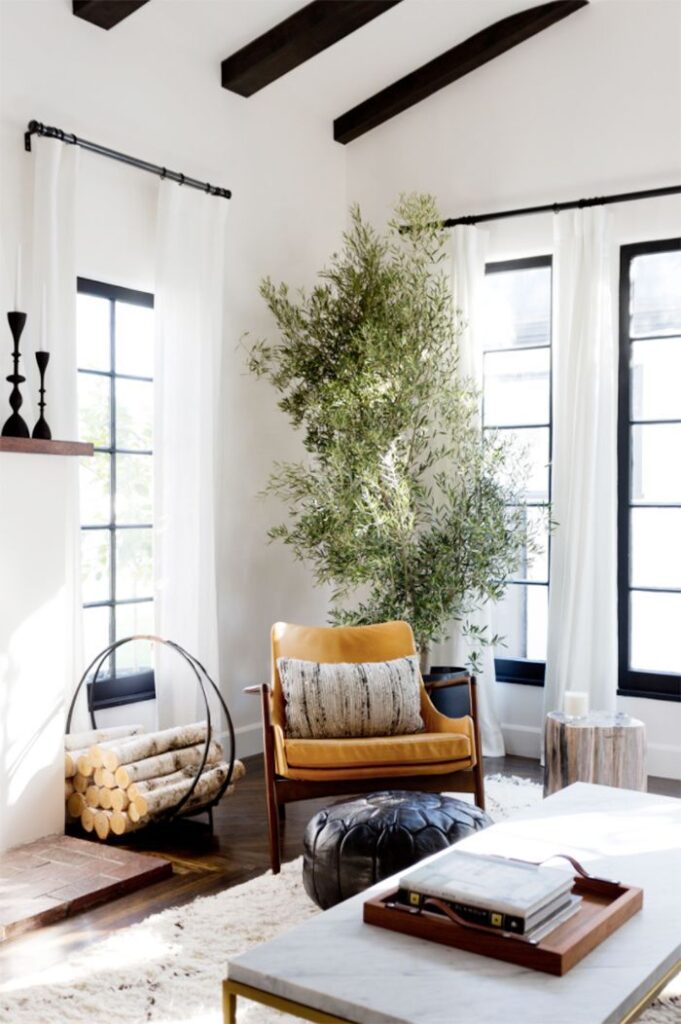
Elements mentioned above are the ways to embrace Mediterranean Design Style in your home.
Get to know about other Design Styles :
Tips to master Scandinavian Interior Design
10 Interior Design Styles Explained
Spanish Revival Style and their Architectural Elements
What is Mediterranean Design Style and how to Embrace it ? Read More »
In this article,we will discuss about the best kitchen cabinet material to use for your kitchen.
Apart from the framework and appliances, it is also important to choose the cabinet surfacing the kitchen unit wisely. The surfacing is not only responsible for the overall look of the kitchen but it is also a key factor that determines the durability of the cabinets.
From budget to high-end, there are a number of options available for kitchen cabinets.
Pros
Wood is available in a diverse range of grains, colours and textures. Natural variation within the material itself adds to its distinctive appeal. It adapts very well to both traditional and modern design styles. Cleaning polished wood is not a hefty task. Avoid highly acidic solutions, such as commercial cleaners.
Cons
Bad-quality timber boards show warps and dents, so care must be taken to buy the right wood. Change in humidity levels can damage the core and surface of the wood, and it needs frequent polishing to maintain its straight and smooth texture. It is also a costly and time-consuming material to work with.

2.Laminates
As solid wood is prone to damage and infestation, often laminates are preferred. Laminates are thin sheets sandwiched together – layers of plastic resin, paper with a printed layer of different patterns or designs, and an overlay of a tough plastic film.
To install such surfaces, composite products like plywood, particle board and MDF (Medium-density fibreboard) are used as substrates. A decorative film or sheet is pasted on these boards. These substrates are cheaper than solid wood (as are laminates) and tougher.
Laminates are thin sheets sandwiched together – layers of plastic resin, several layers of kraft paper topped with a printed layer of different patterns or designs, and an overlay of a tough plastic film.
Do select a laminate from the HPLs (high-pressure laminates) for your kitchens as they are more durable, moisture-resistant and sturdy than the LPLs (low-pressure laminates). From matte to high-gloss, and unicore (where every layer of paper in the laminate has the same pattern and colour, so there is no wearing away) to digital (with specialised, even customised, printing on the surface), you have a lot to choose from. .
Pros
These compressed sheets are both durable and affordable. Since the printed layer comes on a paper backing, you can achieve the look of almost all materials (like wood, metal, leather) with laminates. Its skin does not wear off, scratch or fade easily and it does not require repeated polishing. Laminates are quite resistant to moisture and cleaning their surface is much simpler because they are coated with a thin transparent plastic layer.
Cons
If not installed properly, the edges of laminates tend to peel off. Since laminates are made of plastic-based resins and paper compressed under high pressure, they are a non-renewable material. Some kinds are known to emit toxic gases into the air.

3.Wood veneers
Veneers are slices or sheets of solid wood that are pasted over a composite substrate, just like laminates. These sheets are then stained and polished to achieve a desired colour and texture. Veneers truthfully reflect the refined grains and beauty of natural wood.
Pros
Wood veneers are sustainable and economical compared to wood as only thin slices of solid wood are used to cover large surface areas. Veneers can make a potentially hard-edged kitchen look softer. Veneers can be treated to achieve matte, semi-gloss and high-gloss finishes.
Cons
Veneers tend to discolour when they are exposed to natural light. The sheets require polishing after a period of time, just like wood. You may see stains due to water if the sheet is not polished properly. Veneers are not scratch-resistant.

4.PVC
Poly-vinyl chloride sheets are composite plastic sheets which give a tough finish. Therefore, they can be installed without a substrate. This kitchen cabinet material is inexpensive and easy to install. Being waterproof and oil-proof, it makes a wise option for kitchen cabinetry. PVC sheets are usually available in lighter colours. Some brands also offer faux wooden grains and mouldings.
Pros
This material is termite-proof, anticorrosive and easy to maintain. Just like laminates, PVC sheets are easy to source and replace. PVC is an economical and sound alternative in comparison to laminates and wood-based products.
Cons
PVC sheets do not come in a wide variety of colours and patterns. These sheets are not fire-resistant and they yellow with age. Only hardware that is compatible with plastic can be used for hinges, handles and tracks. Some plastics soften with time, so the joints loosen.

5. Stainless steel or aluminium
Metal kitchen cabinets are very strong and durable. This is a more expensive option, however. Steel or aluminium can be used as doors over wood-based cabinets. I would suggest you team this eclectic material with glass to lighten the look. Though plain ones are the most common, metal sheets are available in varied finishes: brushed, etched and patterned.
Pros
Metals boasts a unique look. Treated metal is sturdy, rust-resistant and stain-resistant. Metal doors are unaffected by heat and humidity. These sheets are easy to scrub and clean, and are therefore unaffected by the spice- and frying-induced grime deposited in our kitchens..
Cons
Metals are available in a limited range of colours. They might need repolishing when the top shiny coat oxidises or rusts. Metal surfaces show oil smudges and fingerprints very clearly, so there’s a lot more deployment of the duster. These sheets also have the tendency to dent and scratch. Last but not least, their doors and drawers are noisier than those of other materials.

Listed above are the best kitchen cabinet materials to use in your home. Do let us know in the comment section if we have left out any materials.
Modular vs Carpenter-Made Kitchen : A Comparison
Kitchen Cabinets : Which is the best material to use? Read More »
Let us look into the most popular interior design styles in this article.
Just like our tastes, there are diverse décor styles that cater to our sensibilities. From the subtle sophistication of a minimalist design to the free-spirited boho colours, from the rustic industrial architecture to the happy eclectic vibe – find out which style speaks to your soul.
Balance and symmetry are the key words that define this style. A traditional style décor provides the feeling of warmth and comfort through colours, furniture designs and furniture placement. Furniture pieces are placed in a formal manner at a focal point in the room and the arrangement is focused on comfort. A sense of order and familiarity is reflected from the architecture and the accessories.
One of the signature elements of the traditional style is its use of abundant fabrics. Along with upholstered furniture, you will find a heavy hand with curtains and other window treatments. There is liberal use of typical accessories, such as vases, candle stands, bowls, accent pieces, sculptures and mirrors. Accessories are usually used in pairs to give a balanced look.

Furniture
Cosy furniture with curves and soft edges is the staple of traditional décor. Other features include detailed woodwork, carved mouldings and graceful lines. Wood with darker and richer tones, such as maple, mahogany, oak and cherry are used as these look luxurious and elegant. You will see wood incorporated in the flooring as well.
Colour
In traditional style, colours do not hog the limelight; neutral palette that provides warmth is prevalent. Think beige, cream, taupe and tan; and if there is any mixing of colours, it is done with deeper hues of brown, blue, red and green.

Form follows function in modern interiors. This style was a response against the traditional look – asymmetry is celebrated and its design essence includes clean lines in architecture and furniture. The emphasis is more on open floor plans and clutter free décor.
Here clutter free entails less use of accessories. Usually, paintings are used to complement the rest of the space. Modern style gives a sense of space and thus is best suited for apartments as it makes the place look larger. This style takes a totally different route from the traditional style in terms of materials used as well; you will see more of chrome, glass and concrete.

Furniture
Clean, straight lines are the norm. The pieces display the deftness of design and the craft of the creator. There is a sense of optimisation and there is no over embellishment.
Colour
Sterile colours, muted colours, beiges, light browns and greys are often used in a modern décor. There are plenty of bright shades used, either as base tones or as accent elements – either in walls or on upholstery or through accessories. But the key is to keep the whole look balanced and sophisticated.
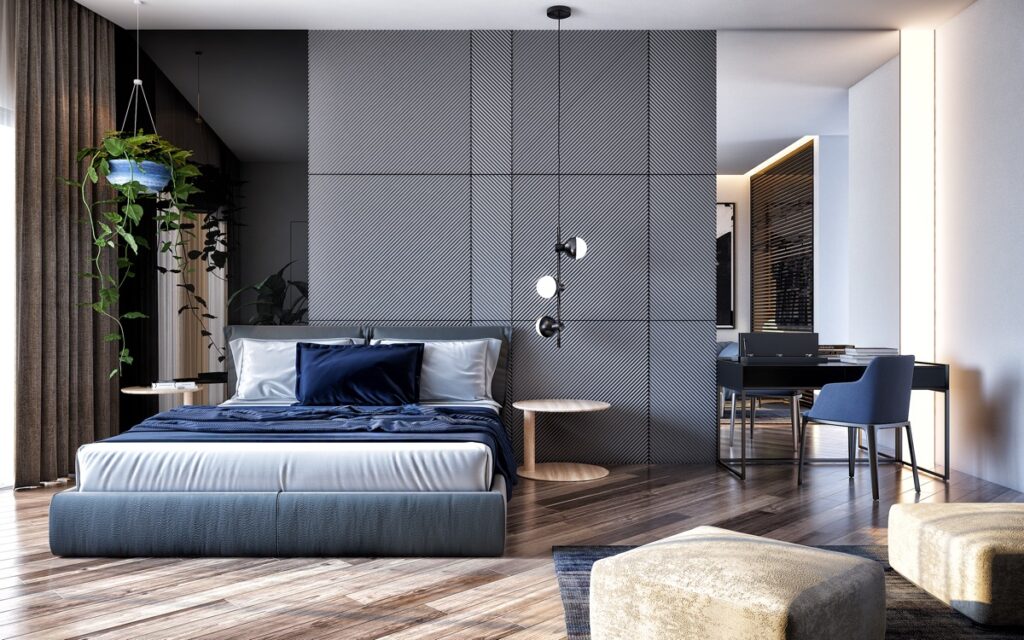
An eclectic design brings together a variety of styles and periods through furniture and décor elements. While this style provides a perfect way to project your personal aesthetic sense, there is a risk of the décor ending up as a mess. The trick is to find harmony through scale, proportion and composition. The variety of pieces, different in colour, texture and design need to find a rhythm when put together. This is achieved by creating a focal point in the room and finding a common ground among the furniture and accessory pieces.
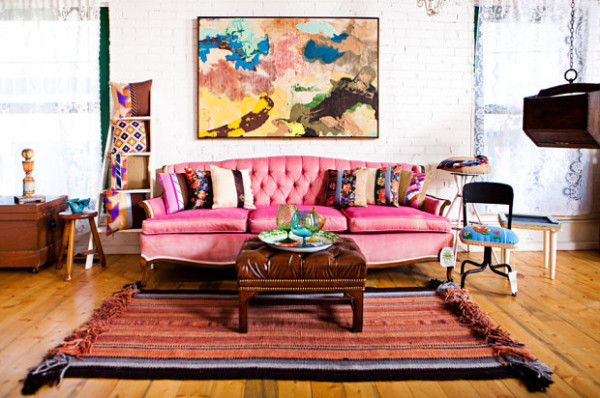
Furniture
Individual pieces in a variety of materials and designs form the backbone of an eclectic set up. Go by the rules of matching opposites and play shiny finish against matte and monochromes against bright hues. The same rule applies to materials as well.
Colour
There are no restrictions in terms of colours; bright primary colours can be placed with pastels, different shades of the same colours can be used through different décor elements. Neutrals are present in order to provide a breather. Though found in abundance, colours actually play a unifying role in an eclectic room.

While it is often confused with the modern style, this one is a more serious interpretation of it. Here the focus is on the basics of line, shape and form; the overall look is always fresh and importance is given to open spaces and natural light. Sleek features and clean lines without any extravagant element are what define these spaces. The look is muted and masculine. Here visual interest is created with materials rather than with colours. It is one of the most popular interior design style practised.

Furniture
Clean lines with softer edges and slim silhouettes are the trademark of contemporary furniture. Light-coloured woods are used with natural fabrics; the upholstery is well-tailored without any ruffles or skirts. Clean lines are given priority. However, this does not mean that the furniture designs are minimal; textures, such as weaves, are often seen in these spaces.
Colour
Colours are often not the focal point; tone-on-tone colour palettes in brown, taupe, white and cream are mostly used. Unlike in a modern décor, contrast is not created with bright hues. Here shades of the similar colour are often used to bring about depth and variety.
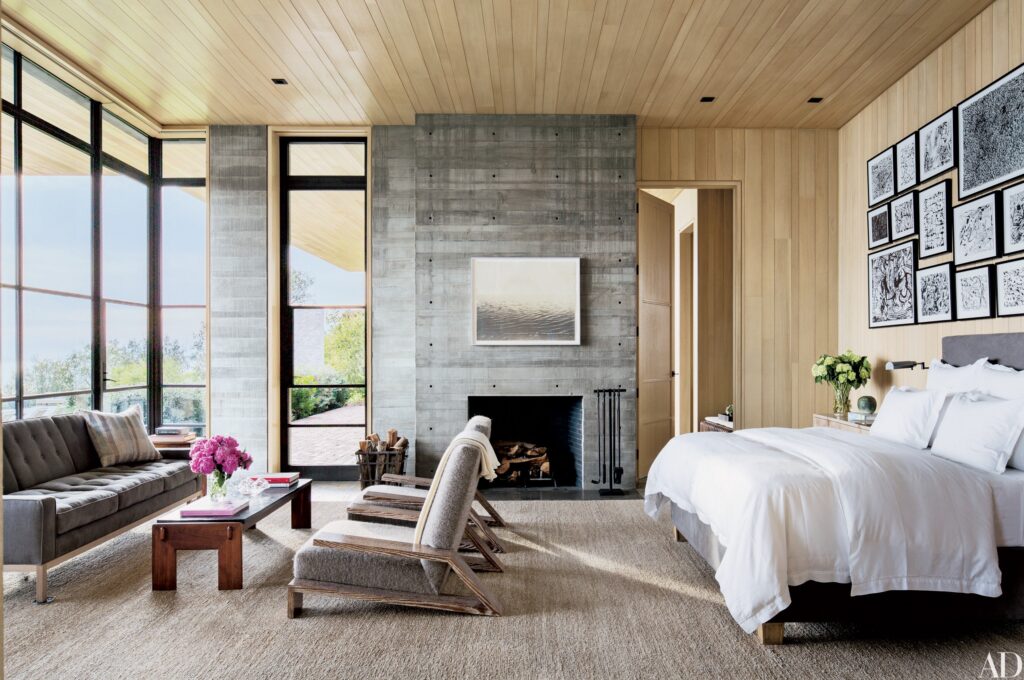
Less is more in the minimalist style. A room with this design not only has minimum furniture but each piece is minimal in itself. Here each furniture piece is given room to breathe so you see an abundance of empty space.

Furniture
The furniture set up can include only the essential pieces with streamlined shapes and neat designs. If upholstered, the fabrics are solid and subdued in colour and can have shiny surfaces.
Colour
White is used predominantly on walls, floors and in furniture and accessories. Greys and monochromatic tones are used frequently too. Bright colours are usually introduced only as accents and are kept to a minimum.
To know more about Minimalism in Design and Architecture click here

A riot of colours and abundance of patterns brought together is how one can define Indian décor. This style is not about the subtle and the subdued. While many patterns are seen in fabrics, furniture, wallpapers and even flooring, paisley and other Indian motifs take prominence.
Statue of deities, such as Ganesha, carpets with intricate patterns, and curtains made of materials like jute, are the predominant markers of this design style.
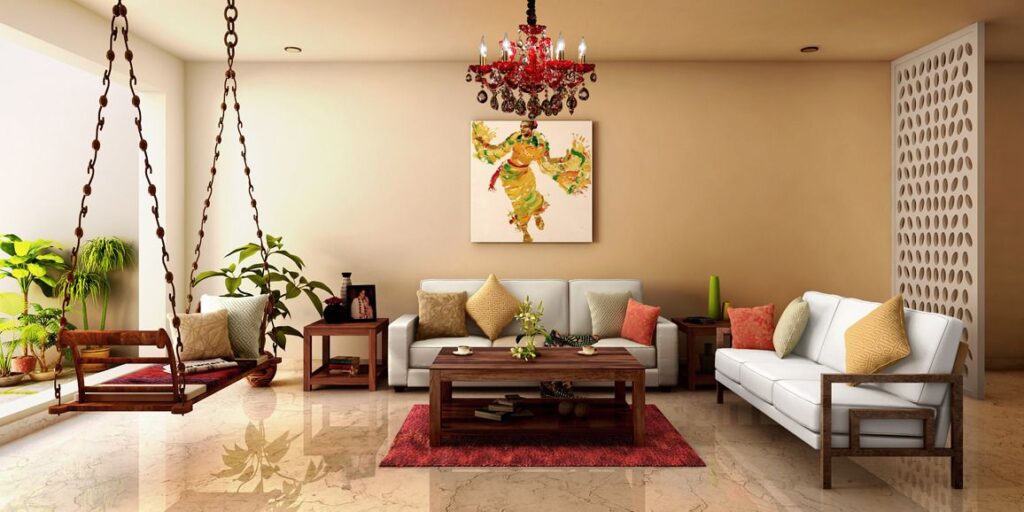
Furniture
Indian furniture is anything but minimalist; intricate carvings on furniture and jaali work are the staple of the Indian décor style. Quintessentially Indian pieces, such as sandook, chairs with carvings on the backrest, traditional cabinets and poster beds abound.
Colour
I like to think that it is the Indian spices that are an inspiration behind this style’s colour palette – to me that explains the more burnt shades in the repertoire that fresh bold colours.

Unfinished, raw and a little rustic, the industrial design style brings the warehouse lookinside your four walls. This style got popular, as the trend to convert old factories into loft or studio apartment gained momentum. An open floor plan, high ceilings, bare windows, exposed pipes, bare bricks on the wall and rough surfaces are some of its characteristics. The architecture of the room is on full display and polished concrete floors usually anchor the whole look.
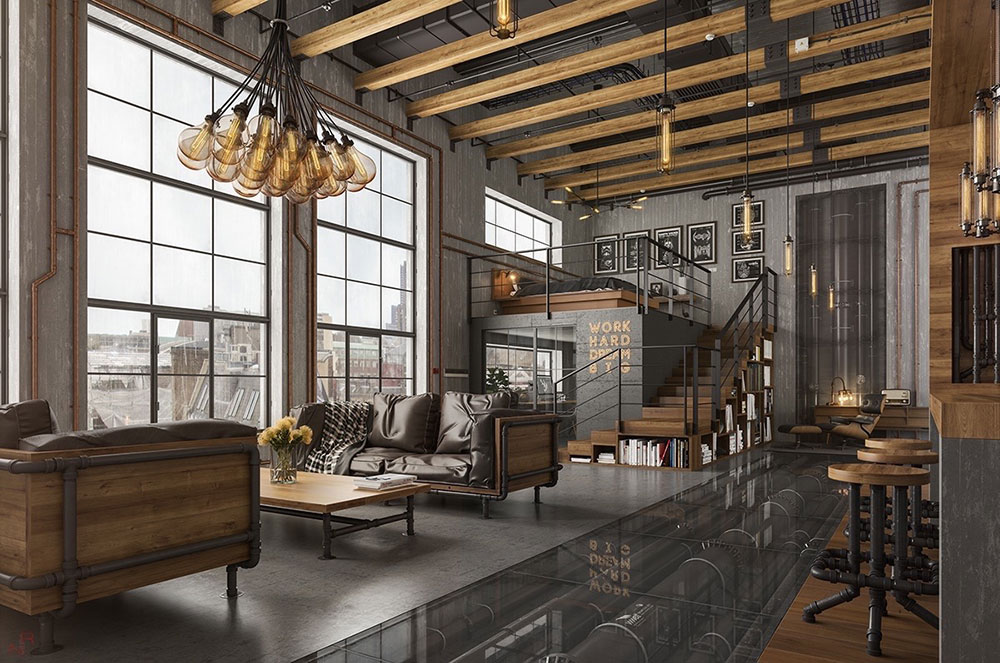
Furniture
Cold metals, such as tin, steel, iron and aluminium dominate the basic infrastructure of an industrial-style room. Wood and concrete are other preferred materials. Lighting fixtures also usually have metal finish.
Colour
Materials dictate the colours, and that boils down to browns and greys. Primary colours are a big no. White and darker tones of grey, blue and red are often used to complement the overall set up.
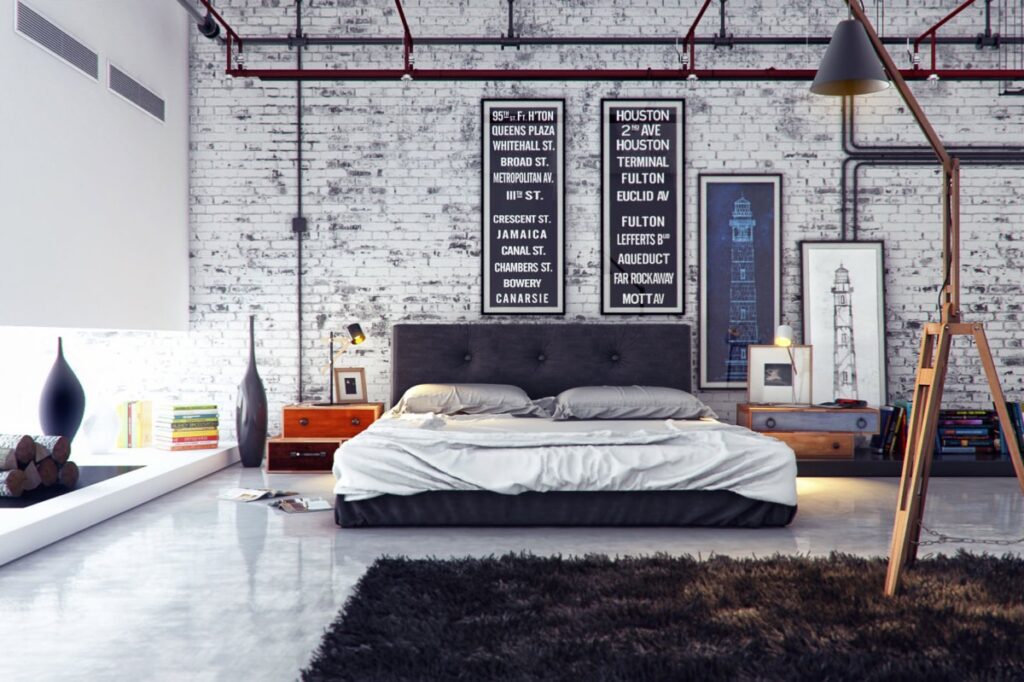
Texture and material take precedence over colour in these well-put together rooms with reasonable amount of accessories. Since it mixes two styles, one has the liberty to choose from a diverse range of floors, wall treatments etc.
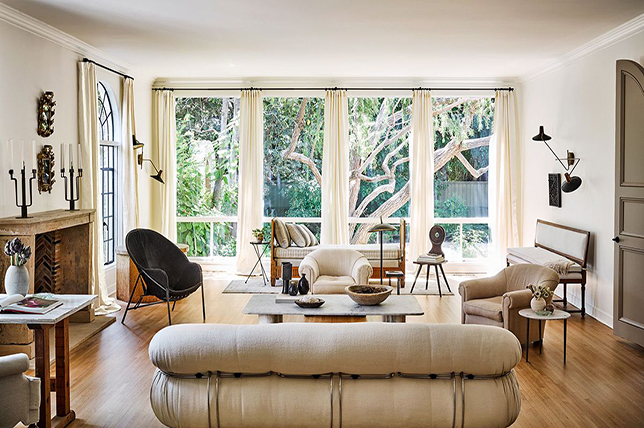
Furniture
Curves meet straight lines here. Traditional sofas and chairs are upholstered in modern fabrics and prints.
Colour
Warm neutral hues are the go-to colours for transitional décor; khaki, grey, taupe and cream are the oft used ones. Prints and patterns, if included, tend to be more subtle.
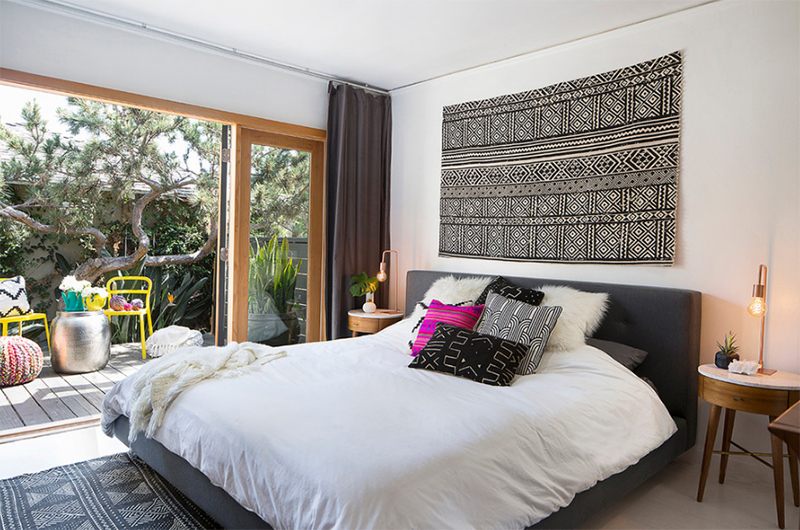
This design style reflects the beauty of chaos. Like the name suggests, this style is all about a carefree spirit which follows no rules. Each boho set up is totally different from the other, but is also similar, as there is an unconventional use and mix of accessories. Layering is the go-to technique, and often elements from different era and countries are used. There is no dearth of colours, patterns and fabrics; priority is given to ethnic patterns and brighter hues.
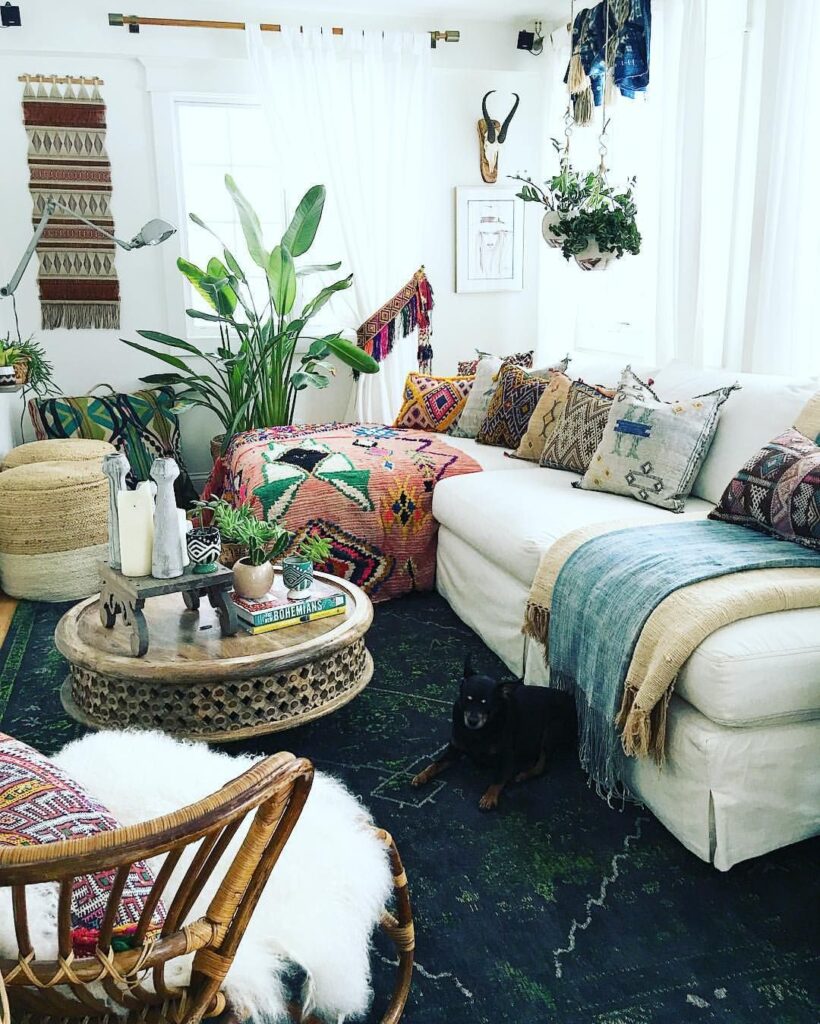
Furniture
Vintage items are preferred. Most pieces possess a nomadic/tribal vibe.
Colour
A wide range of colours is part of the Boho style’s palette. Different hues of the same colour are also included in the colour scheme.

Old school glamour of the Jazz Age comes alive with art deco. This style gained fame during the ‘20s and ‘30s, when glitz and opulence were all the rage.
Bold graphic elements, rich finishes and elegant accessories sum up the essentials. Think high-gloss metals, pearl or tortoise shell finishes, shiny fabrics and mirrors.

Furniture
Along with mirrors of various geometric shapes, reflective furniture pieces, such as consoles, tables, and chest of drawers, are distinct features of an art deco style. Lacquer finish, polished wood or glossy paint are popular choices for treatments in furniture.
Colour
Black and white are the signature hues but this style also uses a lot of pastels – turquoise blues and washed-out pinks are sometimes juxtaposed with each other. Red, gold, silver and deep browns, that give a touch of ostentatious glamour, are often seen too.
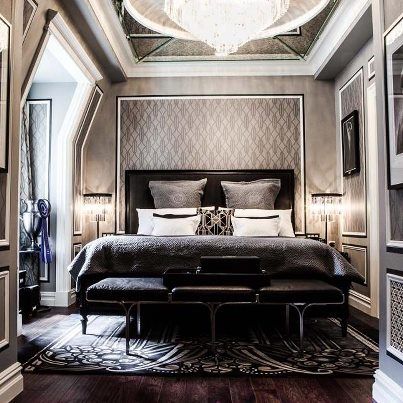
Get to know about Interior design styles in detail :
Tips to Master the Eclectic Decor Style
10 Most Popular Interior Design Styles Explained Read More »
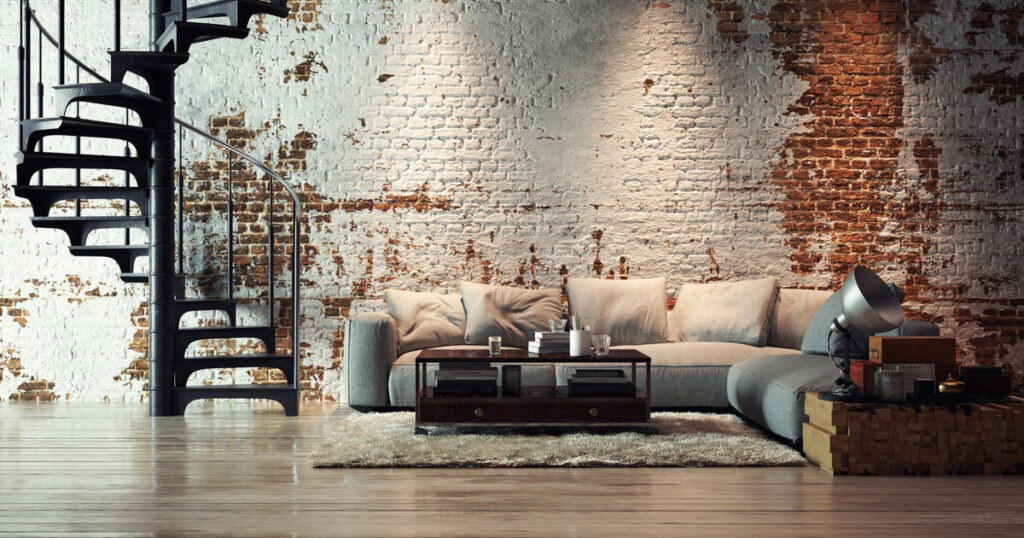
This article explains what is industrial decor and how to embrace it in your own home.
Raw and humble, the industrial style is fairly versatile and can be personalised just as easily. Cosy studio apartments, as well as big homes, can incorporate the ‘unfinished’ look in these ways below.
Use distressed materials
The material palette for this look is often dominated with wood and metal with hints of leather. Look for salvaged objects, repurposed furniture, distressed products and utilitarian accessories. Visit local flea markets and look beyond the dust and chaos. Pick out pieces that evoke grunge and look like they were part of an old cotton mill factory.

Stay true to the colour
Perhaps the easiest way to embrace the industrial style at home is through colour. Set on a grey colour tone with generous helpings of black and white. To soften the relatively cold scheme, introduce wood in mid-to-light tones.It doesn’t mean you’re restricted from using colour altogether. The grey palette goes fashionably well with almost all colours from both, the hot and the cool spectra. But try to restrict yourself to one or two highlight hues per room.

Celebrate metal
Industrial as a style is raw in its essence and unafraid to show its basic functional elements. Pipes, exhaust vents, old structural beams are all embraced instead of being hidden.
Pick accessories like pipes fashioned into lights, buckets turned into wash basins or bread boxes that can be used as planters. There are several on offer, you simply need to think outside the box and pick the ones that work best for you.

In the washroom, use pipes inside of towel or curtain rods. Opt for wired racks, metal freestanding tubs and even old-school metal buckets like those used in rural India before the era of plastic.
To know more about Industrial Style click here
Expose the brick
Nothing spells industrial more than neatly exposed walls. Perhaps the easiest way to infuse your space with factory-like character is to strip down the paint and plaster till you hit brick.
If brick is what you want but the burnt red colour is not what you are looking for, then there’s a way out. Tone down the red brick hue by painting it white, staining or even distressing the wall. Combine a cottage-chic comfort with industrial panache effortlessly by bringing in plants, cosy high-back accent chairs and even a few classic silhouettes.

Bring in the concrete
The grey textured surface of concrete can add oodles of character to your room. It’s the perfect backdrop for both metallic and wooden furniture and accessories. It sets the stage just right for you to embrace a minimalistic-industrial interior style. Not only is it budget friendly, this treatment is super attention grabber. If the unfinished look is a bit much for you in the key living areas, consider doing up a small space like a powder room.

Hardcore storage
Remember those grey metal cupboards by Godrej from your parents’ or grandmother’s home that just kept on lasting forever? They are just the right thing if you wish to bring in the industrial look.

Focus on the grilles
Windows and doors can go a long way in lending your home that much-sought-after industrial vibe. Most of our apartments have double door windows with grilles. Make them work in your favour by painting them black as an ode to old factories and warehouses. Steer clear from ornate or decorative grilles and opt for a simpler, more geometric design. For privacy, opt for simple white curtains or plain blinds, sans patterns.
Easy add ons
If you’re happy with your existing interiors but merely want to introduce an element or two of industrial style, the simplest and most effective way is through lights.
Bring home a light fixture with a grunge personality. A tripod floor lamp, metal pendant lights, a steampunk table lamp, oil lantern-like wall sconces or simple Edison bulbs with long wires should do the trick.
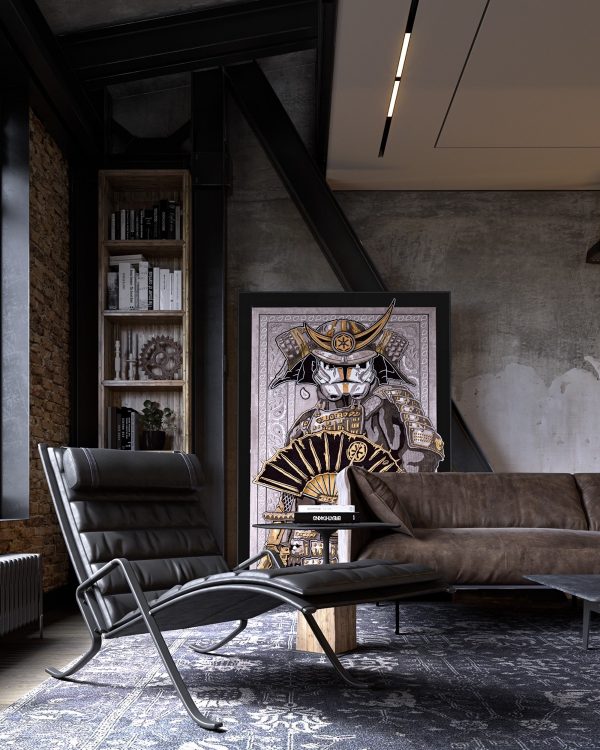
Al the above mentioned elements sums up and explain what is industrial decor.Do follow these to embrace the industrial decor in your space.For any doubts,let us know in the comment section.
Get to know about other Design Styles :
What is Industrial Decor ? A Guide to master it. Read More »
You need to choose between gypsum boards or POP (plaster of paris) when deciding on the raw material for fabrication of a false ceiling. Both are essentially composed of gypsum, a naturally occurring mineral. Gypsum board is factory-manufactured from gypsum with water and a few additives, sandwiched between paper. When gypsum is semi-dehydrated by heating, it forms plaster of paris or POP, a quick-setting fine white powder, which has many uses, including making false ceilings on site. Gypsum and POP have some qualities which are common to both: they are lightweight, heat-insulating and fire-retardant. However, false ceilings of these materials have their respective strengths and weakness. If you are planning to install a new false ceiling in your home here are the pros and cons that will help you decide to choose in the dilemma of Gysum vs POP .
Gypsum
Gypsum boards or panels come in a prefabricated ready-to-install form. They are fixed with screws to a metal frame that is attached to the ceiling slab or soffit (the underside of a structure). For long-term durability make sure that you opt for only good quality metal frames that are rust-proof.
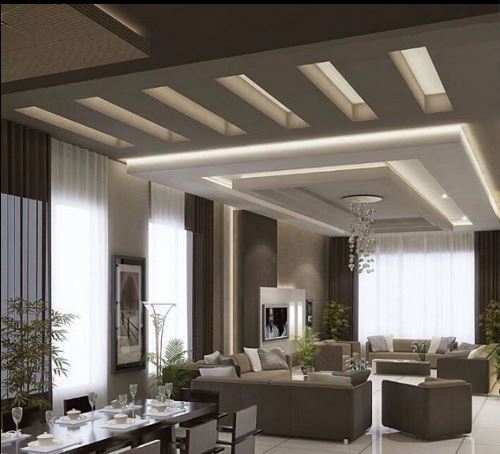
Pros:
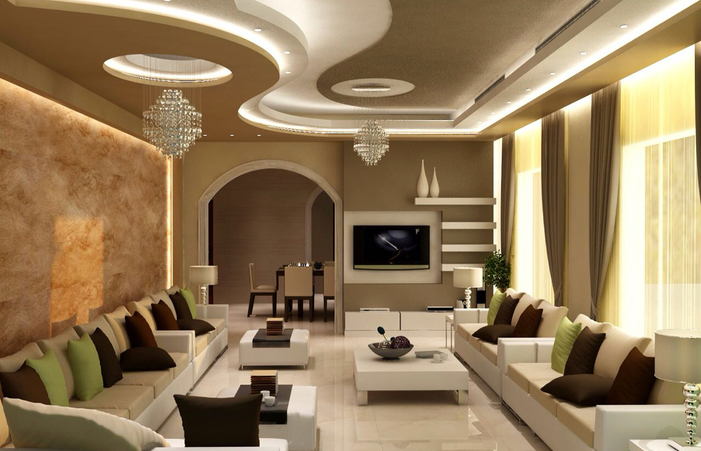
Cons:
POP (Plaster of Paris)
POP is available in the powdered form and is mixed with water on site. This mixture is applied on a chicken mesh, which offers mechanical strength, and is then attached to a metal frame system. POP can be moulded into any shape in its hydrated form; as it dries, it hardens and retains the set shape.
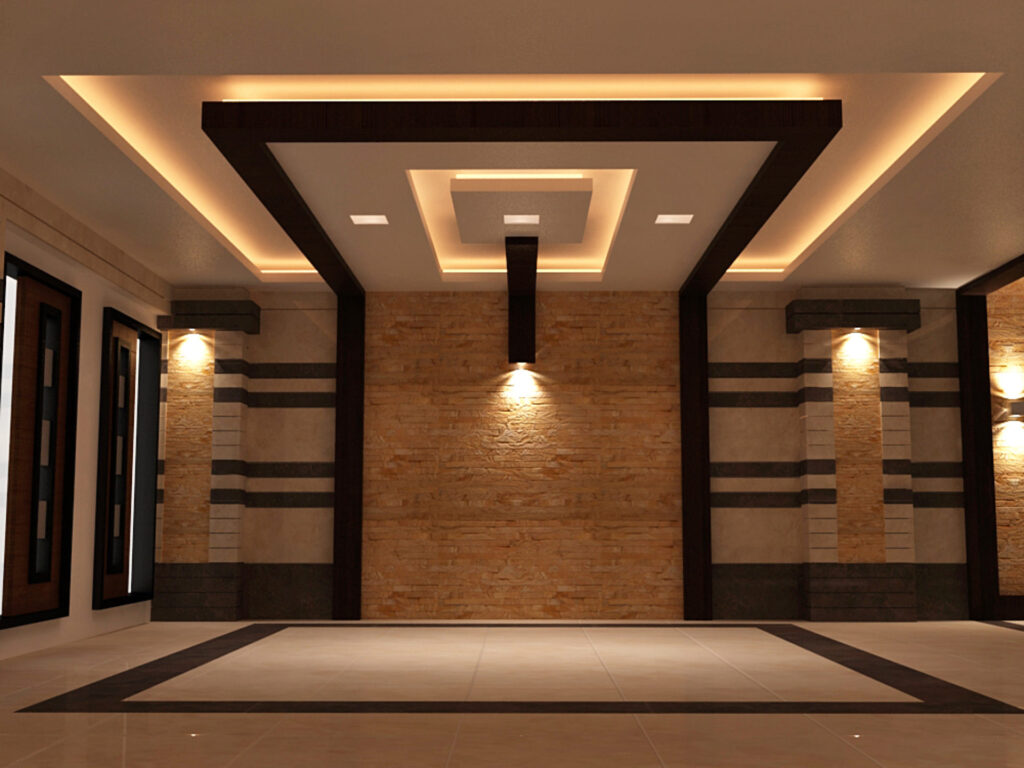
Pros:
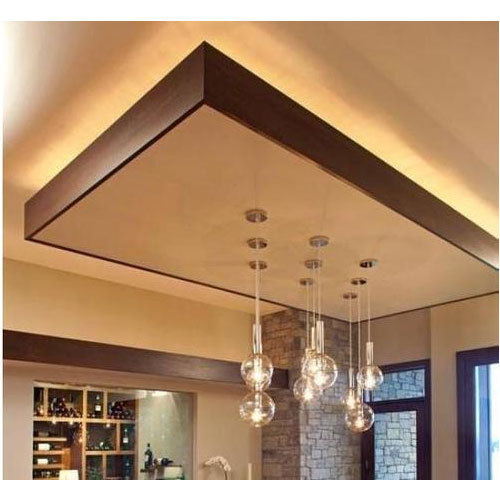
Cons:
Which False Ceiling Material is Better ? Gypsum vs POP Read More »
A false ceiling is a secondary ceiling that is suspended from the structural ceiling of the home, and is made in materials such as POP, gypsum, wood, glass, PVC and so on. These False ceiling materials are long lasting, look good and add to the aesthetic appeal of the space.
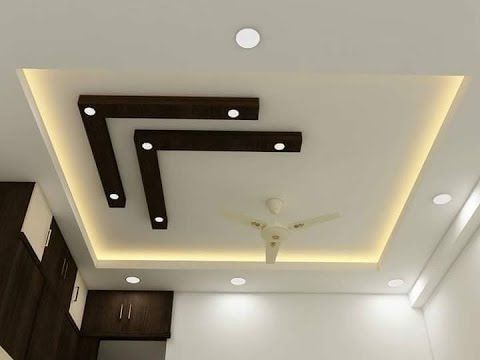
Pros
Cons
Gypsum grid ceilings are most suitable for areas with a ducted air-conditioning or hidden services because these ceiling panels are removable and can allow easy access to the service areas.
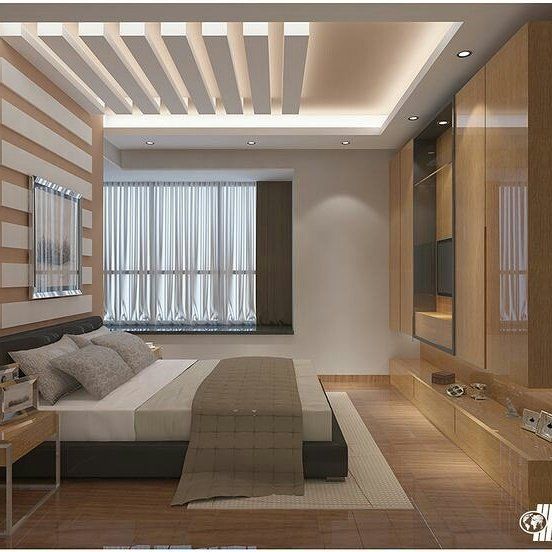
Pros
Cons
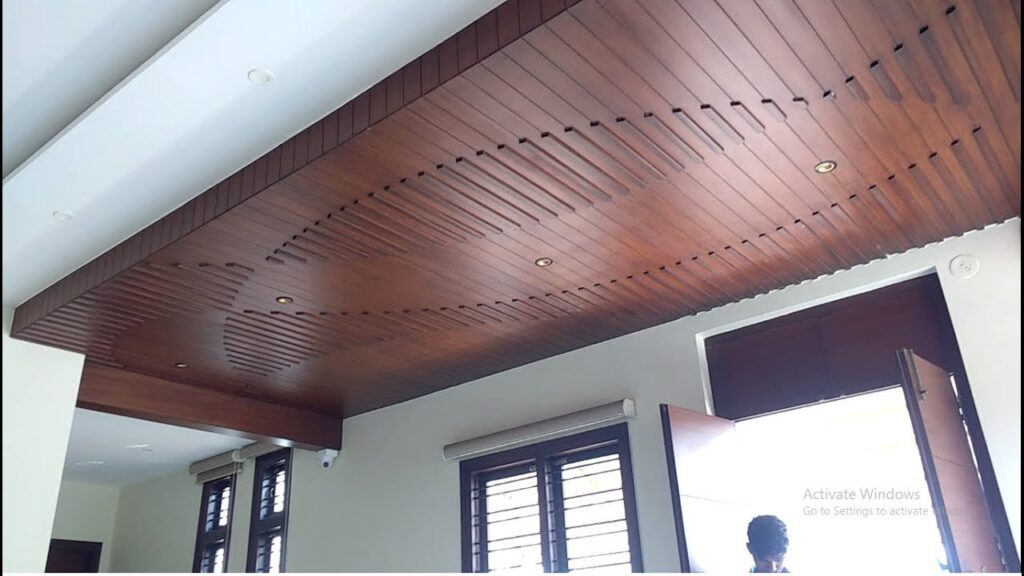
Pros
Cons

Pros
Cons
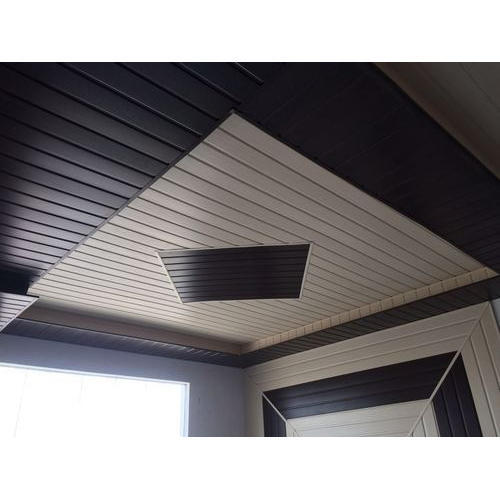
Pros
Cons

Pros
Cons
The most popular False Ceiling Materials Read More »
In this article, we will look into Green Buildings explained in detail.
People have been environment-conscious for the past couple of decades. However, the primary focus was on reducing pollution from industries and on utilising renewable resources. It is only in recent years that people have realised that buildings and building construction activities are the largest consumers of energy on the planet. That is how the Green Building Movement was started.

Green building is the practice of creating structures and using processes that are environmentally responsible and resource-efficient throughout a building’s life-cycle from siting to design, construction, operation, maintenance, renovation and deconstruction.
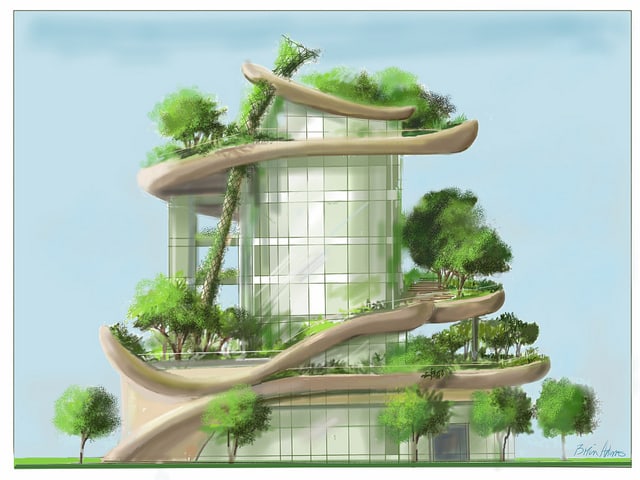
‘Green Buildings’ are the latest buzz word in the field of the built environment. Globally the Green Movement was started in 1990, to address the levels of unsustainable energy consumption in the UK and the U.S. and to bring them down to more acceptable levels of sustainability. With the establishment of the first Green Building rating system, BREEAM in the U.K., followed by the U.S. Green Building Council (USGBC) in 1993, they established targets for designers and manufacturers and offerred incentives, awards and accreditation to buildings. This cause is carried forward by the Indian Green Building Council (IGBC) which has now adopted some of the USGBC standards for Indian conditions. India has been at the forefront of the Green Building movement
Architectural practices are transforming buildings of other colours to ‘Green’. Green building design has emerged as a specialised profession and it appears that in the near future, those who do not think ‘Green’ may be considered outcasts in the industry.
To know more about Green Buildings in detail click here
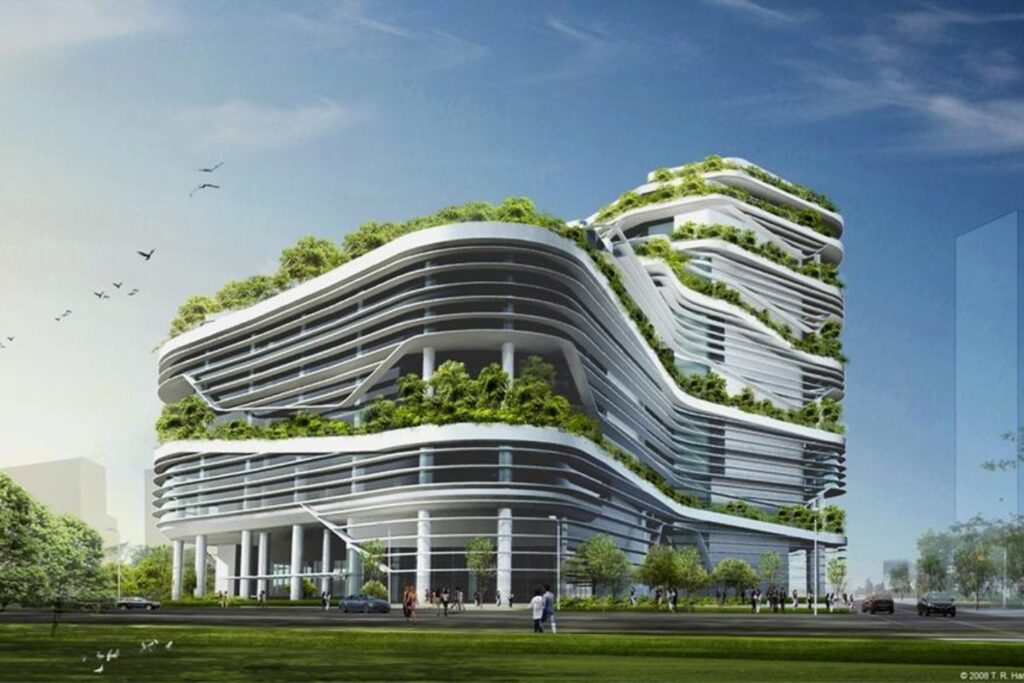
Green Buildings incorporate a number of features at the time of conception, design and construction, so as to reduce the load on the environment. These include:

It is a myth that Green Buildings are expensive and hence economically non-viable in a country like India. Significant savings can be made during construction, if the ‘Green’ concept is incorporated right at the design stage of the building. A green building has been proven to have an operation and maintenance cost saving of upto 25% to 30%. In addition, the intangible benefits of better productivity of occupants, sense of well-being and lower attrition due to the better quality of life are difficult to quantify. Hence, in the long run a Green Building’s cost works out to much less than the regular one.

GREEN BUILDINGS : Explained Read More »